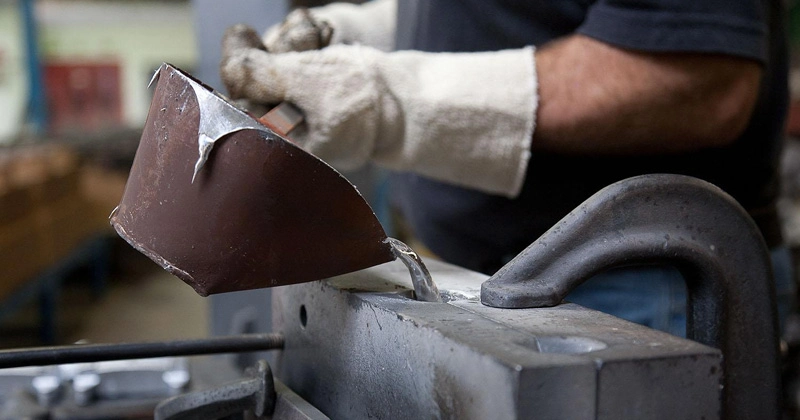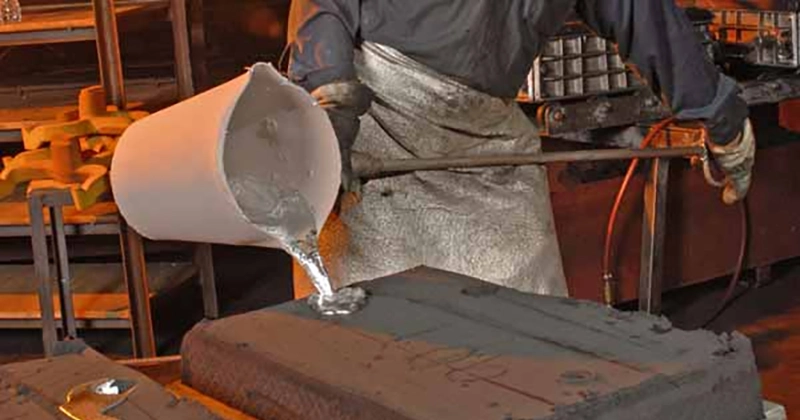In the manufacturing industry, choosing the appropriate casting method is essential to guaranteeing that your products are produced effectively, within budget, and to quality standards. Two of the most popular metal casting methods are gravity die casting and sand casting. Each has its own set of advantages, disadvantages, and applications, depending on the material requirements, part complexity, and production volume.
This article will explore gravity die casting and sand casting in-depth, comparing them in terms of their advantages, limitations, applications, cost-effectiveness, and overall suitability for different projects.
What is Gravity Die Casting?

Melted metal is poured by gravity into a reusable mold in a method known as gravity die casting (GDC), often called permanent mold casting. The mold is perfect for high-volume manufacturing runs since it is usually composed of metal, most often steel or aluminum, and it can be used for multiple cycles. One of the main features of this technique is that it uses no extra pressure and only gravity to fill the mold.
Process Overview:
- Mold Preparation: To guarantee a simple casting extraction, a release agent is applied, and the metal mold is warmed.
- Pouring: Molten metal is transferred into the mold cavity.
- Solidification: The metal cools and hardens, taking the shape of the mold.
- Ejection: The casting is taken out of the mold after solidifying.
What is Sand Casting?

One of the most traditional and adaptable casting techniques is sand casting. Molten metal is injected into the mold chamber after a sand mold is made around the part design. The casting is exposed when the sand mold is broken off after the metal cools and solidifies. Sand casting is typically used for larger and more complex parts, where the mold is not reusable and must be destroyed after each use.
Process Overview:
- Mold Creation: A pattern of the desired part is placed into a mold box and surrounded by sand. The sand is bonded using a special binder to form the mold.
- Pouring: Molten metal is introduced into the sand mold cavity.
- Solidification: The metal cools and hardens within the mold.
- Cleaning: The casting is cleaned once the sand mold is torn off.
Key Differences Between Gravity Die Casting and Sand Casting
Let’s compare the two gravity casting techniques based on a number of criteria to determine which is most appropriate for your project:
| Factor | Gravity Die Casting | Sand Casting |
| Mold Material | Metal (steel or aluminum) | Sand (with binder) |
| Mold Reusability | Reusable (highly durable) | Non-reusable (single-use) |
| Production Volume | High-volume production | Suitable for low to medium volumes |
| Complexity | Suitable for parts with medium complexity | Suitable for large and complex shapes |
| Casting Size | Medium to small parts | Large parts, including oversized items |
| Surface Finish | High-quality surface finish | Rougher surface finish |
| Tolerance | Tight tolerances (dimensional accuracy) | Lower precision compared to GDC |
| Material | Typically non-ferrous metals (aluminum, zinc) | Almost any metal, including ferrous metals |
| Cycle Time | Shorter cycle times | Longer cycle times |
| Cost | Higher setup and tooling costs | Lower setup costs, higher per-unit cost |
Advantages and Disadvantages of Gravity Die Casting
Advantages:
- High Precision and Surface Finish: Higher dimensional precision and a smoother surface finish are made possible by the use of metal molds.
- Reusability: The procedure is more economical for high-volume production because the metal molds may be used repeatedly.
- Efficiency: The cycle time for gravity die casting is relatively short, making it suitable for mass production.
- Material Selection: Non-ferrous metals with superior strength-to-weight ratios, such as magnesium alloys, zinc, and aluminum, are the main candidates.
Disadvantages:
- Initial Setup Cost: The cost of creating metal molds is high, making it unsuitable for low-volume runs.
- Limited Part Size: GDC is typically used for medium-to-small parts due to limitations in mold size.
- Not Ideal for Complex Geometries: While GDC provides good precision, it can struggle with parts requiring very complex geometries or intricate internal features.
Advantages and Disadvantages of Sand Casting
Advantages:
- Low Initial Costs: The mold creation cost for sand casting is low, making it an excellent choice for prototypes and low-volume runs.
- Versatility: Sand casting is incredibly versatile and can be used for nearly any material, including ferrous and non-ferrous metals.
- Large Part Sizes: Sand casting is ideal for producing large components, including parts for heavy industries like construction and transportation.
- Complex Shapes: Sand molds can easily accommodate parts with complex shapes or internal features that would be challenging in other casting methods.
Disadvantages:
- Lower Precision: The surface finish and dimensional accuracy of sand casting are typically not as good as gravity die casting.
- Longer Cycle Times: Sand casting generally has longer cycle times due to the time it takes for the sand mold to harden and the additional cleaning required afterward.
- Single-Use Molds: Unlike gravity die casting, the sand molds are not reusable, which makes each casting process more time-consuming and labor-intensive.
Applications of Gravity Die Casting
Gravity die casting is primarily used for high-volume production of precision metal parts. Some of its key applications include:
- Automotive Industry: GDC is used for manufacturing engine blocks, gearbox housings, and other precision parts made from aluminum alloys.
- Aerospace: Because gravity die casting produces lightweight, high-strength parts, technique is frequently used to cast components like brackets, housings, and frames.
- Consumer Electronics: GDC is used for making housings for gadgets, laptops, and phone parts where precision is essential.
- Industrial Equipment: Gearboxes, pumps, and motor housings are often made using this casting method.
Applications of Sand Casting
Sand casting has many uses and is very adaptable. Some of its key uses include:
- Heavy Equipment: Sand casting is used for producing large, complex parts like engine blocks, frames, and other critical components in industries such as construction, agriculture, and mining.
- Art and Sculpture: Sand casting is a common method used by artists to cast sculptures, as the process allows for intricate details and large sizes.
- Pipes and Fittings: Sand casting is frequently used for producing large pipes and fittings, particularly those made from ferrous metals.
- Prototype and Low-Volume Production: Sand casting is often used for producing prototypes or limited runs of specialized components.
Cost Comparison: Gravity Die Casting vs Sand Casting
| Cost Factor | Gravity Die Casting | Sand Casting |
| Setup Costs | High (due to metal mold preparation) | Low (sand mold preparation is cheaper) |
| Per Unit Cost | Lower for high-volume production | Higher for low-volume production |
| Material Costs | Depends on the type of metal used | Generally lower material costs |
| Labor Costs | Lower for high-volume production | Higher due to manual labor and mold preparation |
| Tooling Costs | High initial investment | Minimal tooling investment |
Overall, gravity die casting tends to have higher initial setup costs due to the expense of producing the metal molds, but sand casting offers a more affordable option for small production runs and complex, larger parts.
Environmental Impact
Both gravity die casting and sand casting have some environmental impacts, particularly due to the energy required to melt metals and the materials used in molds.
- Gravity Die Casting: The process uses reusable molds, which reduces material waste. However, the energy required to melt metal and the potential use of harmful chemicals for mold coatings can have a notable environmental impact.
- Sand Casting: Since mold sand is usually used just once, a lot of waste is produced. The sand’s environmental impact can be decreased, though, because a large portion of it can be recycled after usage.
Reducing waste, utilizing recyclable materials, and increasing energy efficiency can all make both approaches more environmentally friendly.
Choosing the Best Method for Your Project
The choice between Gravity Die Casting and Sand Casting largely depends on your project’s requirements:
- For High-Volume, High-Precision Parts: Gravity Die Casting is ideal when you need a high-quality finish, tight tolerances, and fast production cycles for medium-to-small parts. Automotive, aerospace, and consumer electronics are prime examples of industries that use GDC.
- For Low-Volume, Complex, or Large Parts: Sand Casting is a great choice when the part requires complex geometry, large sizes, or is being produced in small quantities. Industries like construction, art, and heavy equipment rely heavily on sand casting.
